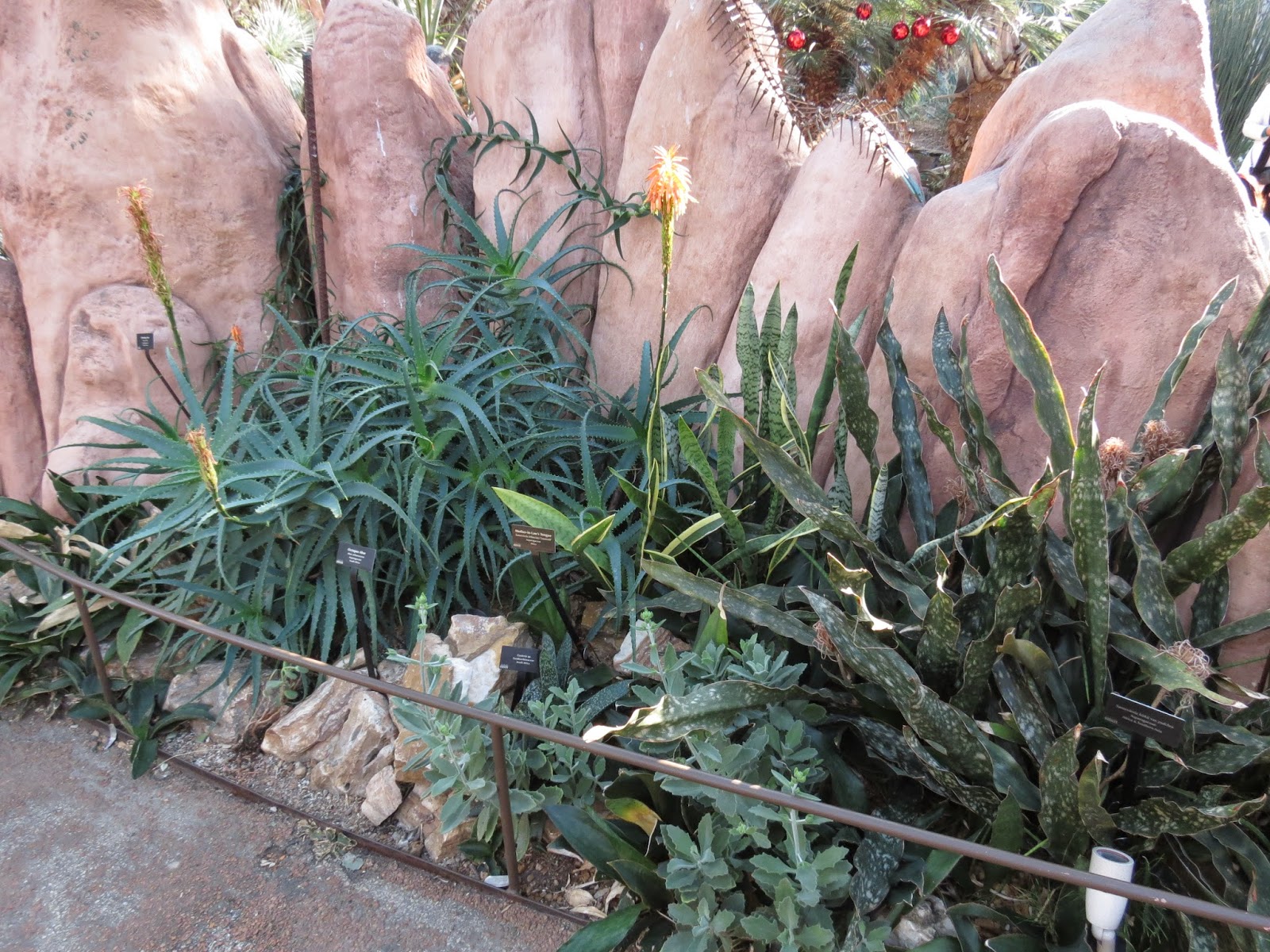Wide Shots: Mitchell Park Conservatory, the Desert Dome
A while ago I promised a friend that I'd return to The Domes to redress my unfortunate omission of the Desert Dome when I first visited. This weekend I finally made it back, so here it is. I'm doing a couple posts on this dome because I took so many pictures. Starting off, then, here are some wide shots so you can get a feel for the Desert Dome at the Mitchell Park Conservatory.
Entering the Desert Dome from the Exhibition Dome, you walk into a collection of desert regions from around the world. First up is Madagascar and Africa. you look out at aloes, haworthias, cycads, euphorbias, and other genera from the deserts of these regions in the foreground. Looking to the right, you are surprised to see what you are fairly sure is a large Furcraea selloa var. marginata, a native of Mexico, with an Encephalartos horridus from Africa growing at its base. Perhaps it is a remnant from before the Desert Dome was organized by region of origin that was too large to move. Maybe someone wanted to add to the authenticity, since some Furcraea and other agave relatives have become invasive in southern Africa. You shrug and decide to simply admire the long, gilt-edged spears of the Furcraea contrasting with the glaucous blue of most of the other plants.
Panning left, you look out across the dome, gazing at towering euphorbias and date palms.
While looking out past an arborescent aloe, you are distracted by a big blue ball hung incongruously from the apex of the dome. It must be a super-sized version of the smaller holiday decorations hung here and there on the plants.
You decide to ignore the big blue ball and any inappropriate jokes that may have come to mind and go back to enjoying the many fascinating plants in the dome.
It reminds you of a nightmarish spinning carnival ride, where all the seats have flown off during a catastrophic accident, leaving just the arms radiating out in silent testimony. (You realize this is a little dark for a blog post and quickly move on before you give your readers nightmares.) Continuing to look at the arid splendor around you, you forget to read the label of the carnival ride euphorbia when you finally reach it.
Looking ahead now, you see the twisted arms of another tree-sized euphorbia with twisting branches. Below it is a dragon tree (Dracaena draco) full of fruit.
Rounding the corner past the dragon tree, the path takes you back towards the Furcraea. You see Euphorbia, cacti, cycads, and Puya all growing in the same area and realize this patch of prickles must not have been planted by area of origin like most of the dome is. Grinning ruefully at your slightly flippant observations earlier, you continue more humbly and return to enjoying the warmth and sunlight streaming into the dome.













I'm glad you managed to return, some stunning spiky specimens they have there that's refreshing to see on a winter's day!
ReplyDeleteI definitely needed the mini-escape from the midwest winter.
DeleteI want a desert dome built over my entire garden. That's not asking too much is it? Of course there would also need to be a sun, a grey desert dome just wouldn't be the same.
ReplyDeleteLove the carnival ride euphorbia, I don't recall ever seeing anything quite like it. Thanks for returning with camera in hand!
It was a nice little escape from the midwest winter. I hope you win the lottery so you can afford that desert dome and the giant lights to hang inside it so it looks sunny in winter.
DeleteDon't feel bad, we are slated to get some rather cold weather here too this week, probably not as bad as the Midwest, but cold for here -- in the 20s. I enjoyed this look around the Desert Dome, so many fascinating plants!
ReplyDeleteOh to be able to call the 20's cold. Hopefully one day soon.
DeleteIt looks like a great place to take refuge from the cold Evan. It always startles me to see how big some of these plants actually get. (Yes, even when they come with labels and I read those labels.) Now I'm wondering if I should move the Furcraea I planted in October before it reaches an unreasonable size for the spot I've got it in.
ReplyDeleteIt's a problem every gardener struggles with. Just how big is a plant actually going to get? That Furcraea is easily over 6 feet tall.
ReplyDeleteLoree said almost exactly what I meant to say. That happens a lot: do you think she is secretly exercising mind control over all who read her blog, or is it just me?
ReplyDelete